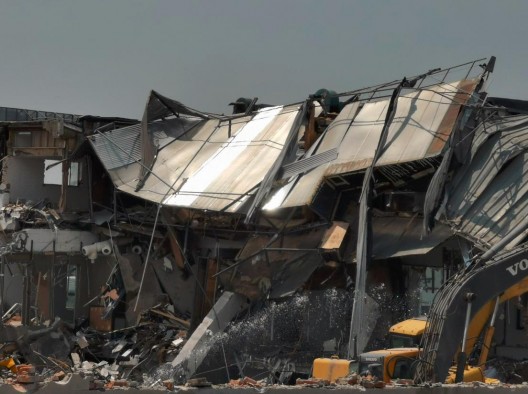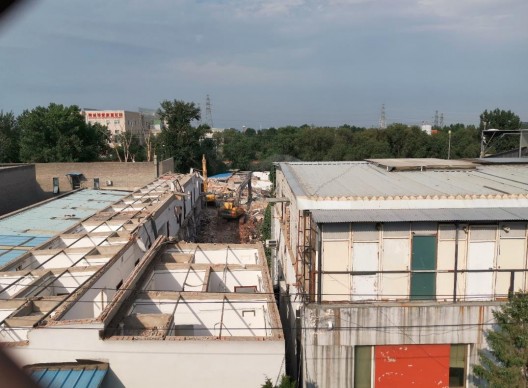By Zhang Zongxi
While the COVID-19 pandemic continued extending its reach across the globe, the month of May in Beijing, with the return of Gallery Weekend Beijing and two new museums opening, seemingly saw the Beijing art world bouncing back to a steady drum of exhibitions. Yet the emergence of new cases of COVID-19 in early June (at Xinfadi Market, Beijing) put Beijing on edge once more. Meanwhile, a few spaces upped sticks, and since it’s that time of the month again, an art district was demolished, and news of disputes/conflicts between artists and institutions popping up every now and then, not to mention a museum hooking up with 20 galleries to put on an exhibition, and certain artists actively taking part and live streaming. Such has been the complex polyphony making up Beijing’s current art scene.
After having been postponed for over two months, the fourth edition of Gallery Weekend Beijing finally launched on 22–31 May. The first large-scale art event in Beijing since the pandemic broke out, the 22 participating galleries and non-profit institutions presented a series of exhibitions, public art installations, discussions, and performances at the 798 art district as well as online. The absence of foreign exhibitions and collectors has put a certain degree of pressure on Gallery Weekend Beijing; quite a few galleries mentioned seeing fewer collectors, but that of course is to be expected given the circumstances. Being the first art platform and project to take the lead in restarting, Gallery Weekend Beijing certainly kept up its influence, not least in invigorating the mood of the Beijing art world.
For the first time, Gallery Weekend Beijing 2020 split the “Best Exhibition Award” into two: “Best Exhibition Award: Innovation Prize” went to the exhibition “Ge Yulu” at Beijing Commune, while the “Best Exhibition Award: Master Prize” was awarded to both Zhu Yu’s solo exhibition “Mute” at Long March Space and Duan Jianyu’s solo exhibition “Life” at Hive Center for Contemporary Art. The exhibition of the emerging sector, “Those who see and know all, are all and can do all” highlighted 19 artists and artist-groups, with videos and installations taking up the better part of the show—which to a certain extent indicated the overall tendency in this year’s Gallery Weekend Beijing.
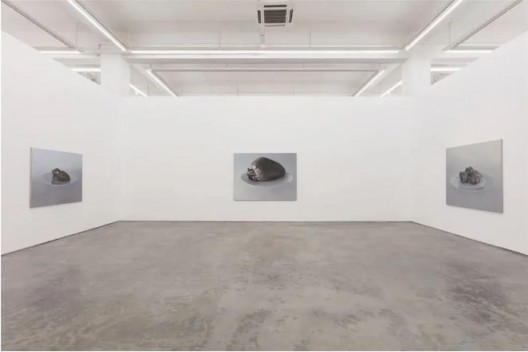
Zhu Yu exhibition, Long March Space, 2020
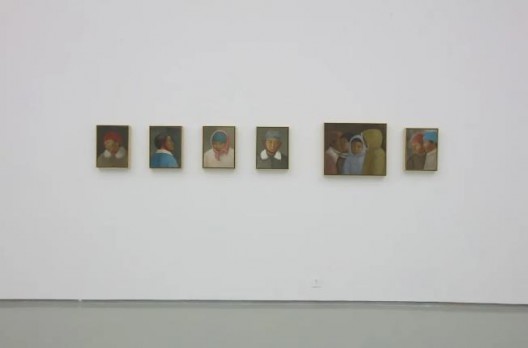
Duan Jianwei exhibition, Hive Center for Contemporary Art, 2020
Of the 22 galleries and institutions, more than half of the shows involved hangable art, evenly divided between abstract and figurative works, with the former seen in Galerie Urs Meile, Ginkgo Space, PIFO Gallery, and White Box Art Center, among others, and the latter figured in the exhibitions at Magician Space, Platform China, Star Gallery, Space Station, N3 Contemporary Art, just to name a few. Videos and installations took up a good proportion, with some exploring the art of video itself, such as “Embodied Mirror: Performances in Chinese Video Art” at New Century Art Foundation’s Beijing Space; others explored the relationship between history and reality, such as AES+F’s exhibition with their large-scale video installations at “What Came to Pass” at Tang Contemporary Art, exploring the globalization of contemporary culture through grand visual narratives. Tang Contemporary Art’s Second Space exhibited Zhao Zhao’s large new installations “White”, probing the history of cotton.
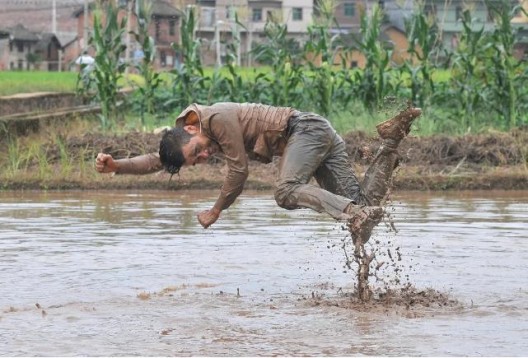
Li Binyuan, “Free Farming”, 2014, video, color, sound
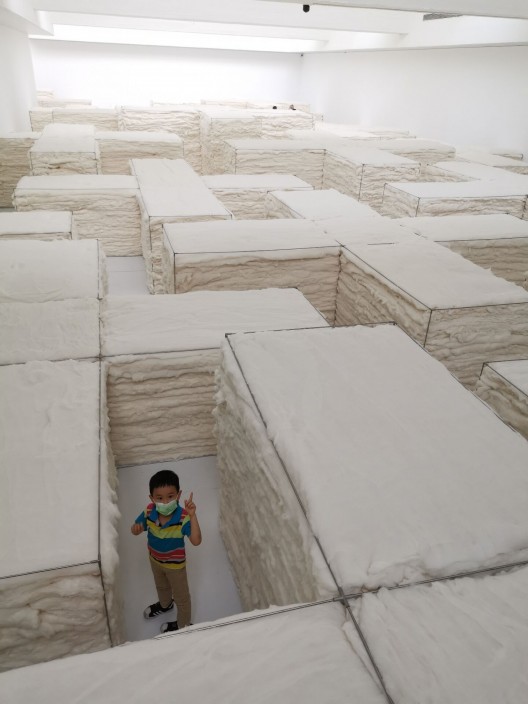
Zhao Zhao exhibition, Tang Contemporary Art, 2020
Thematically speaking, quite a few exhibitions reflected on, reassessed, or scrutinized the contemporary condition. The group exhibition presented by UCCA, “Meditations in an Emergency” focused on everyday life, the body and biopolitics, the human/animal dichotomy, migration and borders, and the information landscape. Ge Yulu, too—with his new work, in which the bodily generation of electricity through cycling transforms an everyday movement into the electricity used in the exhibition space—reminds us to re-consider our own “supplementary electric supply.” Online forums and discussions such as “Perspectives from the International Art Community: Challenges and Possibilities in a Time of Global Crisis” and “Post-Pandemic Age: How to Revisit Contemporary Art in China through the History of Thought and Methodology” equally emphasized reflections on the contemporary.
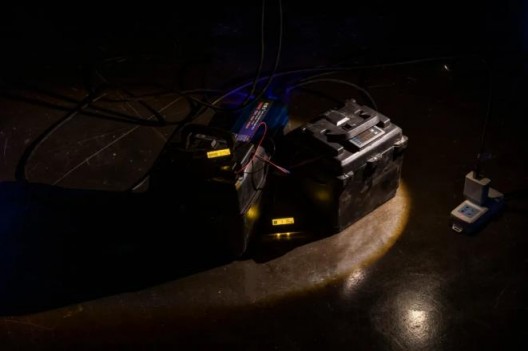
Ge Yulu exhibition, Beijing Commune, 2020
Two of the key galleries chose to present retrospectives of some form or another. With 2019 being the 15th anniversary of Galleria Continua’s Beijing space, last October saw the start of the exhibition “15 Years of Galleria Continua in China: To Be Continua”, with new alterations added every month. Running through to the end of this summer, the gallery has taken turns presenting many works by artists who had their first major solo exhibition at the Beijing space. Tokyo Gallery, too, celebrated their 70th anniversary (they started BTAP in Beijing in 2002) with “We Will Meet Again: 70th Anniversary Exhibition of Tokyo Gallery + BTAP”, showcasing works by the 39 Chinese artists they have collaborated with since BTAP started up in Beijing.

15 Years of Galleria Continua in China: To Be Continua, Galleria Continua Beijing, 2020
During Gallery Weekend Beijing, two new institutions opened. Wind H Art Center, towards the southern gate of 798, opened with “From Screen to Mind: A 50 Year History”, which organized video works by 23 avant-garde Western artists in an exploration of the origins of online and screen art. Another museum up in Cuigezhuang, Chaoyang, received a good deal of attention thanks to its millennial founders: X Museum, opening its doors on 29 May with “How Do We Begin?”, an exhibition that explores interdisciplinary art and youth culture in three “chapters”—“Media and Technology”, “Social Reflector”, “Artists and Architects as Narrators”.
Yet whatever momentum of recovery was knocked back by new cases of COVID-19 in Beijing in early June, to the point of feeling like March all over again. A few art spaces, too, closed or moved for various reasons: The Bunker closed, while XC•Hua Galleries moved out of its Beijing space. What’s more, from late May to mid-June, Beijing’s art districts continued to face demolition or orders to vacate: Caochangdi No. 300 and Dongyuan were demolished (including the studios of the poet Yu Xinqiao and the curator Tang Peixian); Shunyi Shuipo Art Village was demolished; Jiu Chang Art Complex was asked to vacate. Even Li Xianting, in Songzhuang Art District for decades, wrote a post and denounced the way the local authorities were chasing out artists. Such “everyday” news also involved a framing company in Jinzhan, Beijing, which not having moved out in the designated time frame had many artists’ artworks damaged; and another news item was related to the dispute between the artist Zhang Xiaotao, Xia Jifeng, and the former Iberia Center for Contemporary Art.
Caochangdi Art District under demolition, photographed by Zhang Zongxi, 2020
On another note, Song Art Museum, along the banks of the Wenyu river, allocated its numerous exhibition halls to galleries, splitting and delegating the choice of artists as well as the workload of exhibition-making between the galleries: 20 galleries from Beijing, with 20 artists shown at the same time. “2020”, which opened on 19 June, thus became a highlight in the gradually recovering Beijing art world. The world online likewise became a new front, such as Fang Lijun live-streaming his making of a huge print on Douyin/TikTok on 12 June. The latest news is that as a work of the public sector in Gallery Weekend Beijing, Hu Xiangqian’s performance art session “Superfluous Gallery”—which includes online sales of artworks—will be live-streamed on Baidu on 3–4 July. The curator, You Yang even invited the artist, Wang Xingwei, the band Wutiaoren, the writer Annabel Yang (Yang Hao), and others to join in support, attempting to create a “Li Jiaqi” (Austin Li, a major cosmetics influencer) phenomenon in the art world. Naturally, one can foresee how the significance of the event itself will surpass the significance of whatever sales will be made, but one can equally see how artists and curators seem ever more dissatisfied with loitering between “detour” and “access” in the art world.
Translated by Daniel Ho


